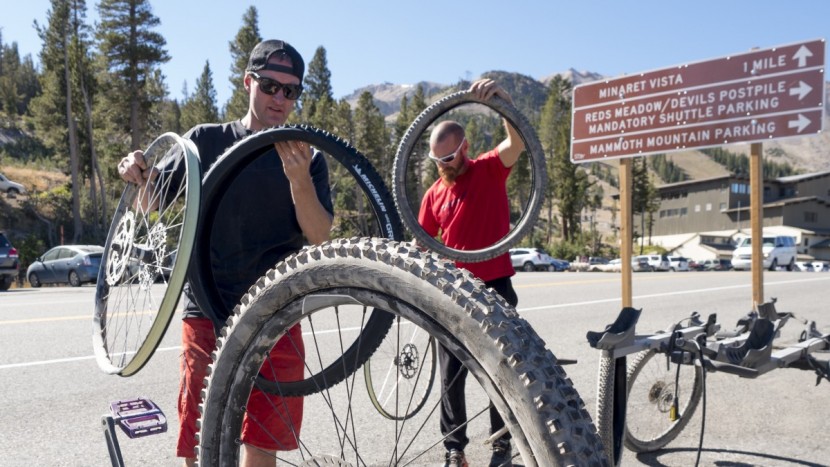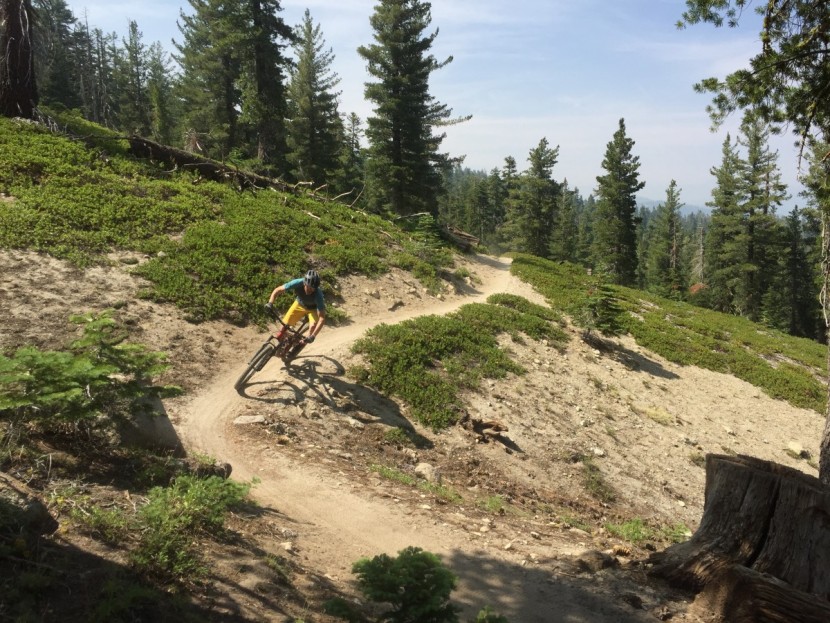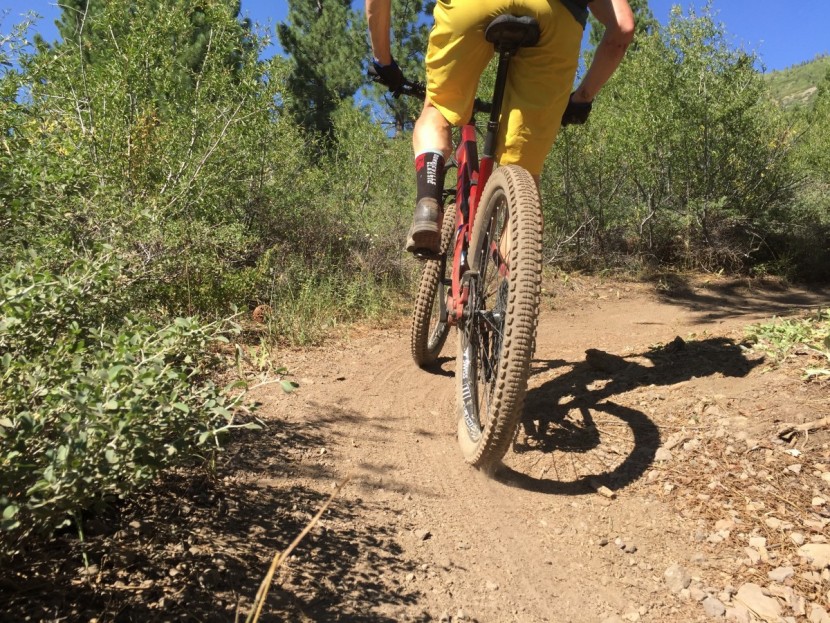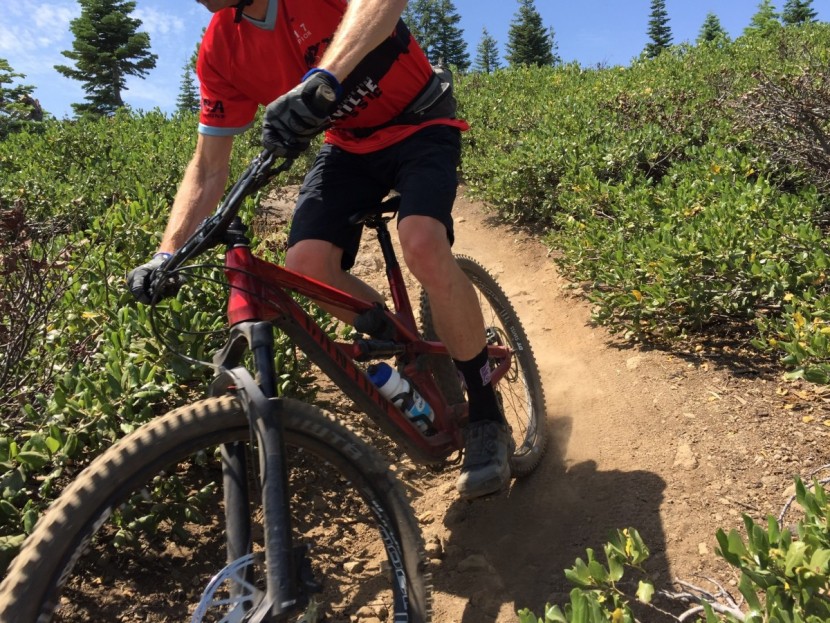Over the course of several months, we put hundreds of miles of trail time on the tires in our test selection. Sometimes, we rode lifts and bombed the bike park until our forearms seared with lactic acid. Other times, we threw our bikes in the truck, shuttled to the top of a dirt road, and charged back down the singletrack. Most of the time, though, instead of burning fuel, we chose to burn the excess calories from too many post-ride beers and earn our turns the old-fashioned way.
For consistency, all tires were tested using rims with an internal width of 30mm. Not the widest rims available, an internal diameter of 30mm is what is most representative of the current trends. For the uninitiated, you might be skeptical and think wide rims are just another way for the mountain bike industry to soak you for another thousand bucks and make your current wheelset obsolete, but they have their advantages.
During our testing process, we rode the tires as we normally would, paying close attention to each model's performance characteristics. We aimed to experience a wide range of trail conditions, including firm, loose, loose over hard, slab rock, chunky rock, and any other terrain we could find.
Cornering Tests
To test cornering, we cornered - a lot. We found corners of all types and conditions and leaned our bikes into them to determine each tire's cornering capabilities. Is this tire drifty? edgy? does it have a smooth or abrupt transition? If so, then why? These were some of the many things we were thinking about as we rode each tire. We even did some controlled cornering testing with a figure 8 in a flat, hard-packed parking lot. This controlled cornering testing really allowed us to zero in on specific cornering attributes and push the tires to their limits.
Traction Tests
While we were out riding, we pedaled, and quite a bit. Our normal test loops were basically our standard local trail rides, and those involve a fair bit of climbing. This allowed us to focus on each tire's pedal traction. This included climbing traction on all types of conditions and trail types, but also general non-braking traction as the tire rolled over various surfaces. Does this tire grip or slip, and why?
When riding, being able to brake effectively is crucial. Therefore, the braking traction of your tire is a vital performance characteristic that we took into consideration. To test this, we conducted experiments on the braking traction of the tires under typical everyday riding conditions, paying close attention to the cornering and pedaling traction as well. We tested the tires on various trail surfaces and conditions, applying the brakes hard, soft, and sometimes at the last minute. We carefully observed the traction of each tire while braking and analyzed which designs worked best and which did not.
Rolling Resistance Tests
Rolling resistance can vary among different tire models due to a number of reasons such as tread height, layout, spacing, and the softness of the rubber. It affects how quickly or slowly a tire can roll, and is more noticeable on firm surfaces than on loose ones. When it comes to trail riding, rear tires are usually more affected as they bear more weight and receive more pedaling input. To determine the difference in rolling resistance, we relied on our own perception while riding. Faster rolling tires are noticeably faster, while slower rolling tires can feel sluggish or lethargic.
Longevity
To test the longevity of each tire, we used and abused it as if it were our own. After each ride and at the end of our test period, we inspected each tire's tread and sidewall for wear. Some tires are less durable than others, which is readily apparent by observing the rate at which they wear after use. By looking at the side knobs of a tire, you can observe how quickly and evenly they wear. Some tire knobs show little signs of wear after 100 miles of riding, while others have chunks of rubber missing or are hanging by a thread. Sidewalls are the other major durability consideration, with manufacturers using different casings and protective layers. Again, general trail riding is the perfect test for a sidewall's durability, as we regularly scraped ours against rocks and rimmed out more than a few times on each tire during testing. Observing the condition of the sidewalls after these common mishaps gave us insight into how each stands up over time and use.
Ease of Installation
To test the installation of the tires, we installed them all ourselves. Each model is slightly different regarding how easy they are to install yourself, and this simple test was performed in our home workshops. We noted how easy it was to put the tire on the rim and then seat the bead. For the most part, all of the tires we tested could be installed without the use of a tire lever, and their beads could be seated using only a floor pump or our trusty ToPeak Joe Blow Blaster. A couple of stubborn tires required the use of our home compressor, and one especially pesky tire even made us take a trip to the bike shop to use their high-powered shop compressor. We realize our results may differ from what you experience at home or in the field. The same tire may be easier or more difficult to install on a different wheel.
Conclusion
During the testing period, we meticulously documented the performance of each tire. Once the testing was completed, we analyzed our notes and rated each tire based on the criteria mentioned earlier. This comparative review is a result of our findings. We hope that the information presented here will assist you in selecting the most suitable tires for your specific riding needs.





